..
CHAPTER 15: FUNGAL
PARASITES OF INSECTS AND NEMATODES

This chapter is
divided into the following major sections:
insect-pathogenic
fungi
nematode-destroying fungi
SAMPLE
TEXT:
Fungi commonly attack insects,
nematodes and other invertebrates in natural
environments. In doing so they act as natural population
regulators, helping to keep insect and nematode pests in
check. Some insect-pathogenic and nematode-destroying
fungi can also be exploited as biocontrol agents, and
some are available commercially as alternatives to
chemical pesticides. In this chapter we consider the
specific adaptations of fungi for this mode of
parasitism. It is an important topic not only because it
extends our coverage of parasitic interactions, but also
because the control of insect pests and nematodes is
currently achieved by highly toxic chemicals, with known
or potential adverse effects on humans and the
environment. For example, aldicarb is a systemic
insecticide, nematicide and acaricide (mite-control
agent) of the carbamate type, currently registered for
restricted use on selected crops in the USA. It is one of
the most acutely toxic pesticides to mammals, aquatic
invertebrates, fish and birds; it accumulates in
groundwater, and it poisons through either oral or dermal
contact. The antidote to aldicarb is atropine
(from the plant Atropa belladonna), traditionally
used on the poison darts of African bushmen! The
development of effective biocontrol agents could provide
at least a partial solution to some of these
environmental problems.
THE INSECT-PATHOGENIC FUNGI
Examples of some common
insect-pathogenic fungi (entomopathogens) are
listed in Table 15.1. All these fungi are specifically
adapted to parasitise insects, and depend on insects for
their survival in nature. In this chapter we will deal
first with the general aspects of their mode of
parasitism and then focus on specific issues, including
the potential for exploiting insect-pathogenic fungi as
biocontrol agents.
| Table 15.1. Some common fungi
that parasitise insects and other arthropods |
| Parasitic fungus |
Hosts |
| Metarhizium anisopliae |
Many: lepidoptera,
coleoptera, orthoptera, hemiptera, hymenoptera |
| Beauveria bassiana |
Most/all |
| Hirsutella thompsonii |
Arachnida (mites) |
| Cordyceps militaris |
Many larvae and pupae of
lepidoptera, some coleoptera and hymenoptera |
| Nomuraea rileyi |
Larvae and pupae of
lepidoptera, coleoptera |
| Paecilomyces farinosus |
Many (lepidoptera, diptera,
homoptera, coleoptera, hymenoptera, arachnida) |
| Lecanicillium lecanii |
Several, especially scale
insects and aphids |
| Entomophthora, Erynia
and similar Zygomycota |
Various, often
host-specific, e.g. Entomophthora muscae
on flies, Erynia neoaphidis on aphids |
| Coelomomyces spp. |
Mosquitoes and midges;
often host-specific |
| Footnotes
to Table 15.1: Lepidoptera (butterflies and
moths); Diptera (flies); Homoptera (bugs);
Coleoptera (beetles); Hymenoptera (wasps and
bees); Orthoptera (grasshoppers and locusts);
Hemiptera (sucking bugs); Arachnida (spiders and
mites). |
..
| Table 15.2. Some examples of
currently registered mycoinsecticides |
| Country |
Registered product name |
Fungus |
Target pest |
Crop |
| USA |
Mycotrol, Botanigard
|
Beauveria bassiana |
Whitefly, aphids, thrips |
Glasshouse tomatoes and
ornamentals |
| USA |
Naturalis |
B. bassiana |
Sucking insects |
Cotton, glasshouse crops |
| USA |
BioBlast |
Metarhizium anisopliae |
Termites |
Domestic houses |
| USA/Europe |
PFR-97TM |
Paecilomyces
fumosoroseus |
Whitefly, thrips |
Glasshouse crops |
| UK Europe |
Vertalec |
Lecanicillium lecanii |
Aphids |
Glasshouse crops |
| UK, Europe |
Mycotal |
L. lecanii |
Whitefly, thrips |
Glasshouse crops |
| South Africa |
Green Muscle |
M. anisopliae |
Locusts |
Natural bushland |
| Reunion |
Betel |
B. bassiana |
Scarab beetle larvae |
Sugar cane |
| Switzerland |
Engerlingspilz |
Beauveria brogniartii |
Scarab beetle larvae |
Pasture |
| Switzerland |
Beauveria Schweizer |
B. brogniartii |
Scarab beetle larvae |
Pasture |
| France |
Ostrinol |
B. bassiana |
Corn borer |
Maize |
| Australia |
BioGreen |
Metarhizium flavoviride |
Cockchafer |
Pasture, turf |
-----------------------------------------
Table 15.3. Examples of the major
types of nematophagous fungi
|
| Fungus |
Behavioural group |
Infective unit |
CHYTRIDIOMYCOTA:
Catenaria anguillulae |
Endoparasite |
Zoospore |
OOMYCOTA:
Nematophthora gynophila
Myzocytium humicola |
Endoparasite
Endoparasite |
Zoospore
Adhesive zoospore cyst |
ZYGOMYCOTA:
Stylopage and Cystopage spp |
Predator |
Adhesive hyphae |
| MITOSPORIC
FUNGI (some of these have sexual stages in
the Ascomycota – see Ascomycota below): |
Arthrobotrys oligospora
Monacrosporium cionopagum
Dactylella brochopage
Drechmeria coniospora
Hirsutella rhossiliensis
Verticillium chlamydosporium
Dactylaria candida |
Predator
Predator
Predator
Endoparasite
Endoparasite
Egg parasite
Predator |
Adhesive nets
Adhesive branches
Constricting rings
Adhesive conidia
Adhesive conidia
Hyphal invasion
Adhesive knobs and non-constricting rings |
ASCOMYCOTA:
Atricordyceps (sexual stage of Harposporium
oxycoracum)
Orbilia spp (sexual stages of some Dactylella,
Arthrobotrys and Monacrosporium spp.) |
Endoparasite |
Non-adhesive conidia |
BASIDIOMYCOTA:
Hohenbuehelia (gilled mushroom - the
sexual stage of several Nematoctonus species)
Pleurotus ostreatus (gilled mushroom) |
Predator
Predator and toxin producer |
Adhesive conidia
Adhesive traps and toxic droplets |
Chapter 15 images. Click on
the thumbnails for a larger version
|

Fig 15.1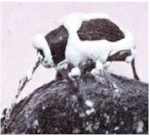
Fig 15.2d
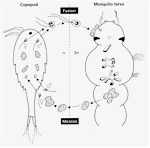
Fig 15.5 (see text)
|

Fig 15.2a
Fig 15.2e

Fig 15.6
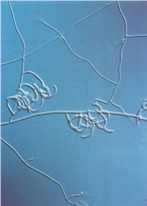
Fig 15.8b
|

Fig 15.2b
Fig 15.3

Fig 15.7 (see text)

Fig 15.9

Fig 15.10
|
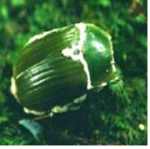
Fig 15.2c
Fig 15.4
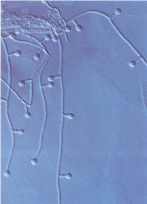
Fig 15.8a

Fig 15.11
|
GO TO
CHAPTER 16 ?
GO TO HOME
PAGE ?
|














